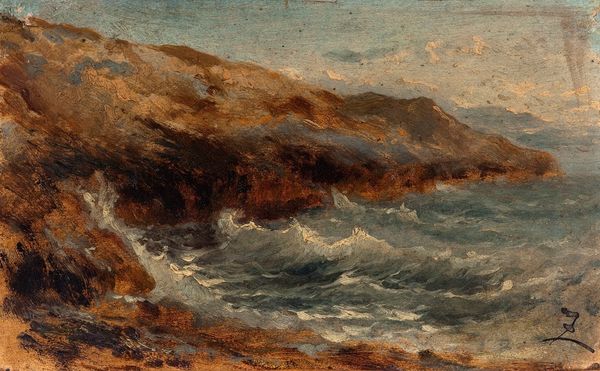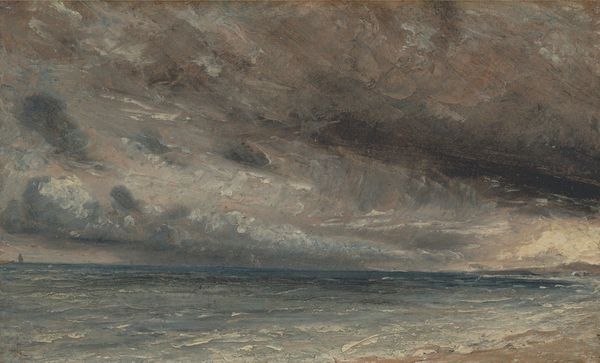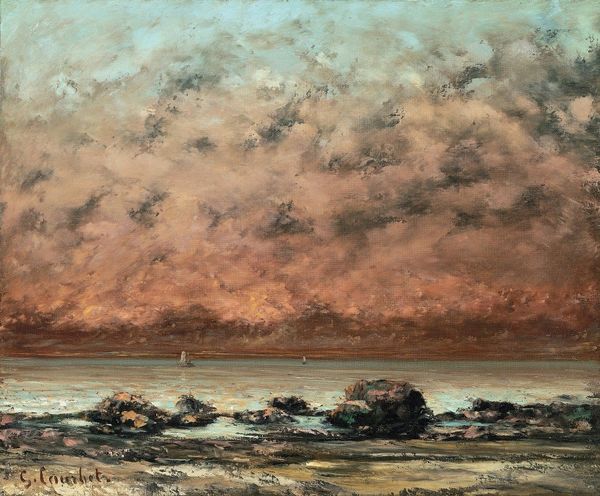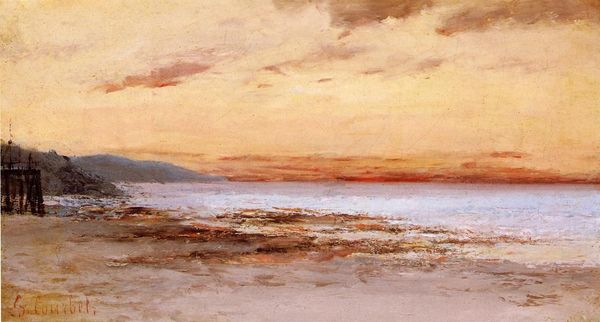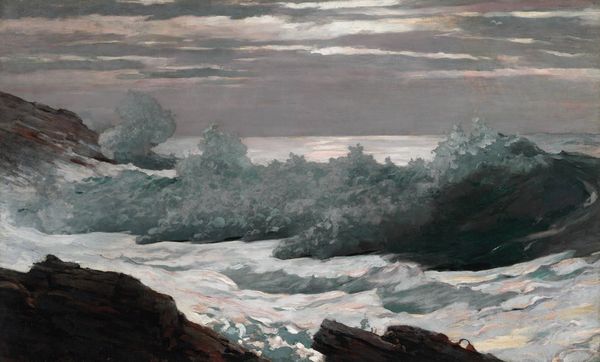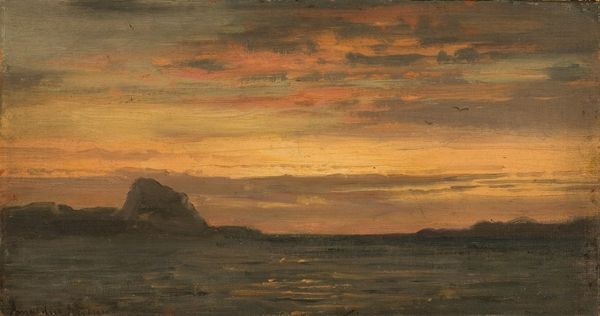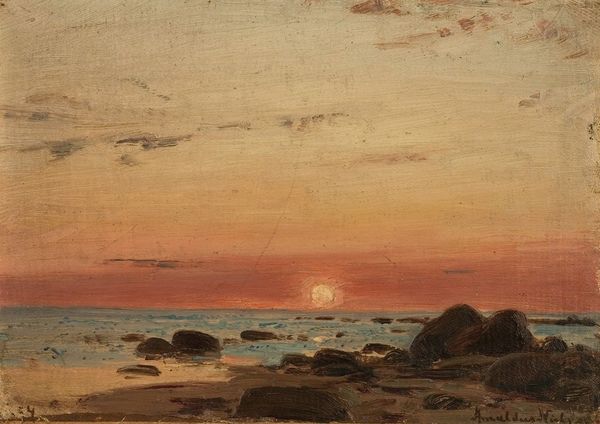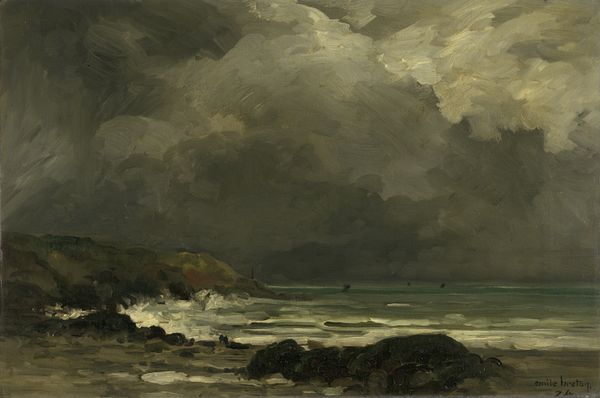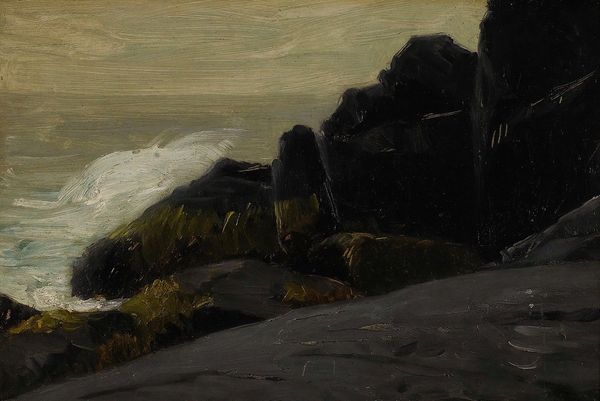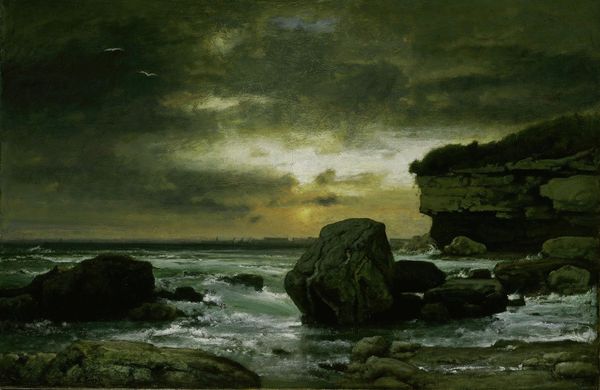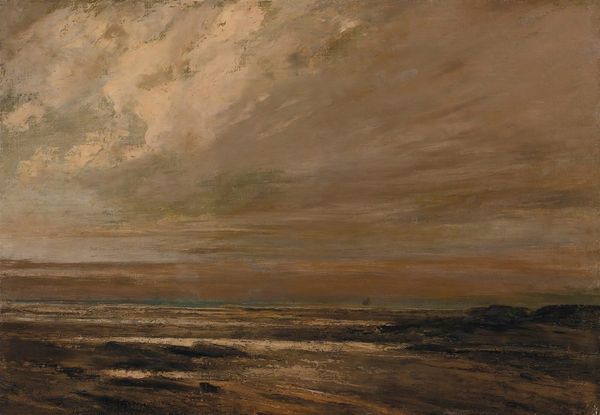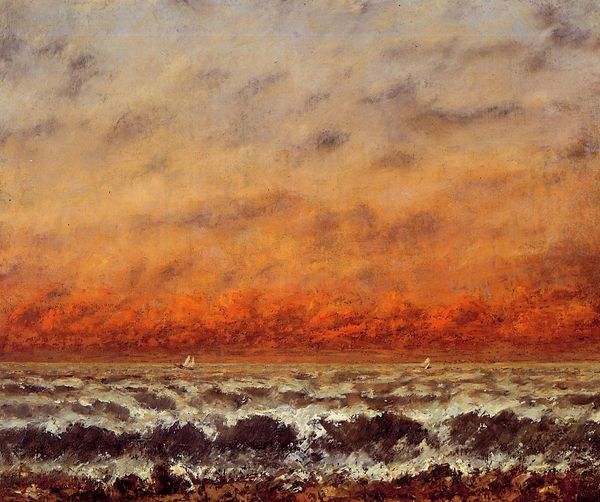
painting, plein-air, oil-paint
#
sky
#
painting
#
impressionism
#
plein-air
#
oil-paint
#
landscape
#
impressionist landscape
#
oil painting
#
ocean
#
rock
#
sea
Dimensions: 26.7 x 40.9 cm
Copyright: Public domain
Curator: This is Gustave Courbet's "After the Storm," painted in 1872. It depicts a coastal scene rendered with oil on canvas. Editor: Well, immediately, that striking vermillion sky commands attention. It’s incredibly turbulent, but there's also this serene stillness to the composition with the beach, so very beautiful. Curator: The dynamic brushwork, especially in the clouds, certainly activates the surface. Consider how Courbet builds texture, almost sculptural in its application of paint. Do you notice how the dark rocks in the foreground establish depth? Editor: I do. I think what is especially powerful about Courbet's approach here is its embrace of realism amid the upheaval of the Franco-Prussian War, using nature to perhaps capture resilience. What sort of influence did the Impressionists have on Courbet? Curator: His broken brushstrokes definitely prefigure impressionistic techniques. Courbet was a leader of the Realist movement and significantly influenced the next generation of painters like the Impressionists, and plein-air practice became fundamental. Here we see that influence manifested by this pursuit of representing transient effects of light and atmosphere. Editor: Looking at the scene it evokes for me something beyond just aesthetics, reflecting broader socio-political anxieties within the post-war era. These rocky structures seem very stable while this vermillion tempest swirls about. Is Courbet showing a nation’s resilience despite great losses in the recent conflicts? Curator: Absolutely, the turbulent sky could symbolize turmoil and the aftermath of war. And conversely the sea which appears still is symbolic of that strength, a lasting nature and solid composition, even as it faces environmental trials. This creates layers within the painting. Editor: Yes, this piece is truly striking! Thinking of the art world then makes me wonder: how have these works been interpreted by those from differing positions of power? Curator: Considering all its various structures, and contextual underlays the piece's cultural currency will probably rise. It allows space for formal technique to be applied into historic analysis. Editor: Indeed. I’ll carry those notions with me now.
Comments
No comments
Be the first to comment and join the conversation on the ultimate creative platform.
